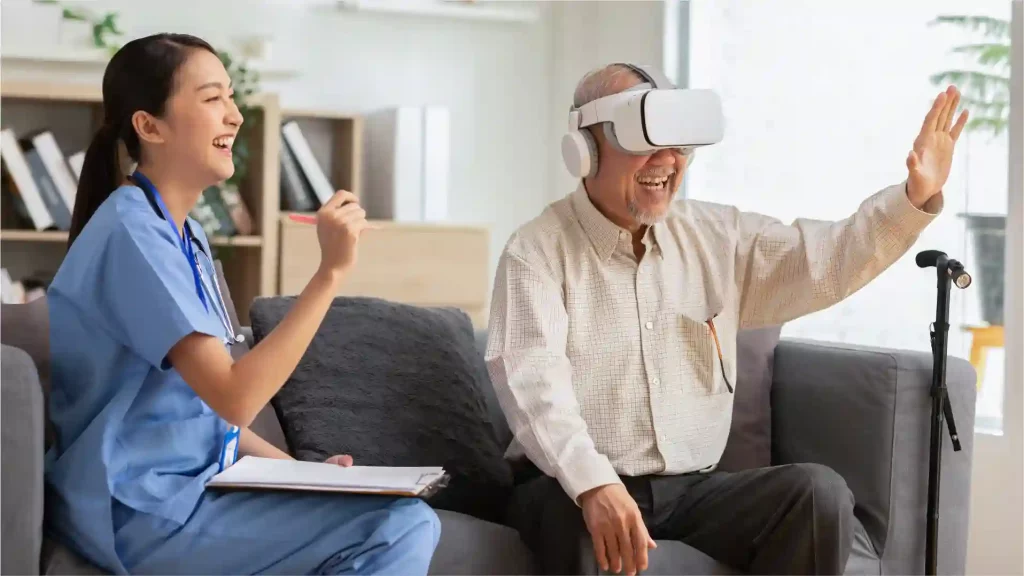The biggest brands in the world are turning to the Metaverse. Nike is making sneakers, Gucci has established an outlet, and The Weeknd sold out a concert on the Metaverse.
With an overlap of existing, and ever-connected technologies like VR, AR and AI, the Metaverse could easily be mistaken for a playground for the technology obsessed.
However, the implications of all this new technology and its potential applications in the Healthcare sector are too good to be ignored.
Telemedicine in the Metaverse can equalise access
New and innovative forms of healthcare are already emerging from this digital evolution with all sorts of therapies, such as computer vision-assisted physiotherapy, making use of augmented and virtual reality technologies.
Traditionally, healthcare was about bringing people together in the same room – this is the way that medical training, consultations, procedures and treatments have always worked.
Providing distributed groups of people equal access to healthcare has always been a challenge, since medical practitioners were not always in the same location as the populace that required treatment. This typically led to a scarcity of medical services, most often for people who needed it the most.
Telemedicine, which seeks to improve access, has been accelerated by the pandemic and has been on the rise over the last two years. An increasing number of doctors, nurses, pharmacists, therapists and their patients have embraced the improved ease of access, greater efficiencies and improved affordability, connecting via audio and video links to enable consultations especially to people who could not travel to meet the medical practitioner.
However, healthcare services in the metaverse will take this to new heights. Empowered by VR headsets with facial recognition technology and VR haptic gloves, providers and patients will be able to interact virtually in a hyper-realistic manner, allowing them to feel like they are actually in the same room together for a consultation. This technology can surpass any geographical boundaries, so that a doctor in Cape Town can easily consult with a patient in Chennai. As the metaverse experience becomes normalized for ordinary people, its potential to transform telehealth becomes huge.
There are a number of opportunities offered for healthcare services in the Metaverse. Patients can use blockchain technology to securely store and share their medical records. A digital twin can be created for each baby born, on which simulations for therapeutic treatment can be checked for adverse reactions. The possibilities are limitless.
Initially, metaverse medical services will be seen as a second option to physical consultations, but as with video telehealth today, popularity will increase over time as the convenience and cost benefits are unlocked by consumers, service providers and funders.
Safety challenges in metaverse healthcare
At a time when the world is already facing serious security and privacy issues, the transition to digital healthcare will highlight the need for improved security and privacy. However, with the use of NFTs and blockchain, security is less of a problem in the Metaverse than in the real world.
Adoption depends on it, and there will be no democratization of healthcare in the metaverse without the protection of data and personal healthcare information, ensuring its users safety and security in this new realm.
Ultimately, innovation is key to offering distributed medical services from a single source. While telemedicine is still catching up with the Metaverse, the applications and opportunities that can be offered by the platform are massive, and the healthcare sector stands to benefit as a whole.
About the Metaverse
The metaverse is essentially a merging of virtual, augmented, and physical reality, and blurs the line between your interactions online and in real life. But broken down more simply, it’s a handful of platforms like the Sandbox, Mirandus, and Decentraland on which people can interact in different ways, like making purchases, attending concerts, meeting other people and much, much more.
